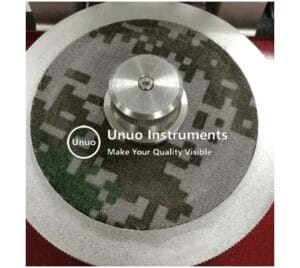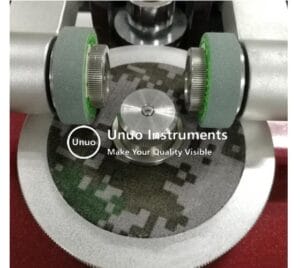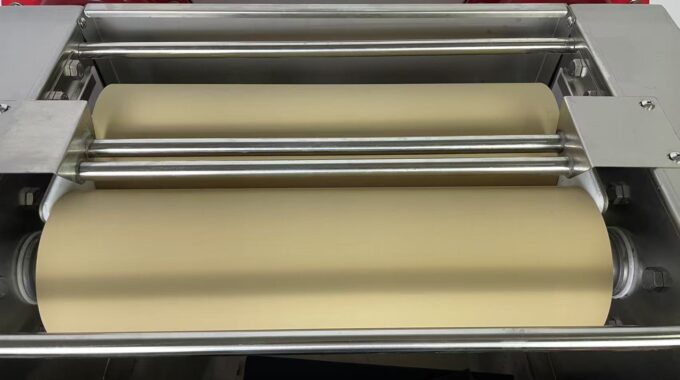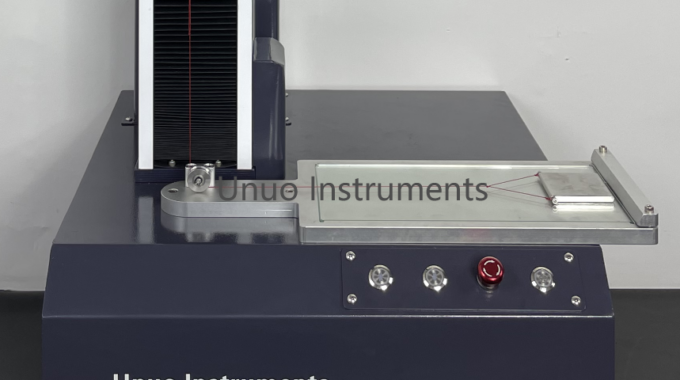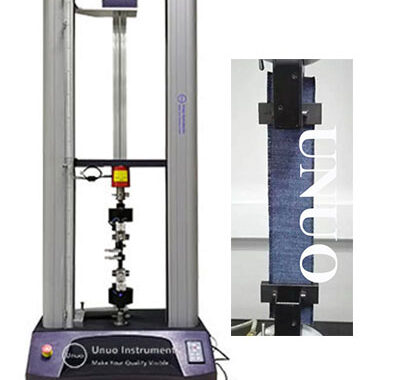1. What is a Laboratory Padder? A laboratory padder (also called a lab padder or…
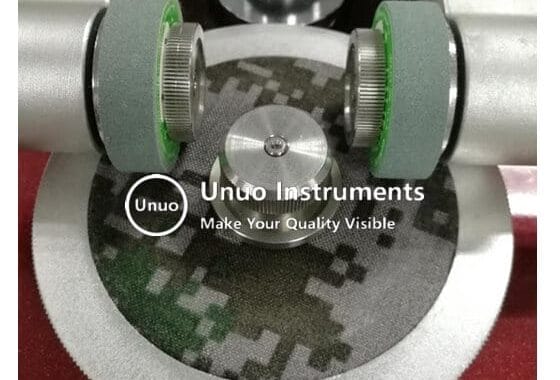
Taber Abrasion ASTM D3884 Textile Fabric Abrasion | Unuo
Taber Abrasion ASTM D3884 is a method to determine textile fabric abrasion resistance by using rotary platform, double-head tester(RPDH) which is also named as Taber abrasion tester.
Taber abrasion test is also used to evaluate abrasion resistance of coated fabrics, artificial shoe uppers/linings, leather, organic coatings, rubber and other materials with a thickness of less than 5mm. Taber wear resistance cannot indicate the practicability of materials in practical applications, but the judgment of fabric practicability can be evaluated by combining wear resistance tests with actual end use. Taber wear resistance can at least provide a reference for fabric practicability.
For this article we would mainly focus on textile fabric abrasion resistance test (dry abrasion) – taber abrasion ASTM D3884. This method is conducted by taber abrasion tester which would rub sample under specific pressure and load on the rotary platform with taber abrasive wheel.
The sample to be tested is fixed on a platform, the platform rotates, and the sample rotates and rubs against the two abrasion wheels. One wheel rubs the outer surface of the sample outward toward the circumference, and the other rubs the inner surface of the sample inward toward the center of the circle. The final friction trajectory travels a cross arc with an area of about 30cm2.
ASTM D3884 Test Procedure
Step 1: sample preparation:
5 test samples, if you need to evaluate the color change, you need to cut out 5 samples as a comparison sample, the diameter of the sample is 105±2, and there is a 6mm diameter hole in the middle. Pay attention to ensure that the sample has no wrinkles, creases or wrinkles, and avoid oil, water, and grease during operation.
Step 2: Taber abraser Requirements
Rotating platform diameter (107±2) mm, tightening ring inner diameter (100±2) mm, load selection: 250g, 500g, 1000g, vacuum suction system, speed: (60±2) r/min or (72±2) r/min )
Step 3: Abrasive wheel pretreatment
For the pretreatment of the taber abrasive wheel, the new wheel needs to be pre-ground 100 cycles with sandpaper (S-11) (Each resurfacting disc is good for one 25 or 50 cycles resurfacing ooperation, after which it must be discarded.)
Step 4: Abrasion Wheel Cleaning
For taber abrasion wheel cleaning, when the test cycle is more than 1000 cycles, it is necessary to use sandpaper (S-11) to pre-grind 50 cycles to clean the taber abrasion wheel. If the test cycle is less than 1000 cycles, it is suitable to rub the s-11 for 25 cycles.
Step 5:How to choose the taber abrasion wheel
Choose a abrasion wheel suitable for the sample material, or use a suitable abrasion wheel as specified by the parties concerned. Below is a abrasion wheel table from ASTM D3884 for your reference.
Install the resurfacing disc (S-11) evenly on the rotating platform, make sure the surface is flat and without wrinkles, tighten the middle nut, and gently tighten the clamping ring to secure the s-11 disc. Put down the grinding wheel carefully. Put the vacuum nozzle down, 7±1mm away from the surface of the disc. Start the vacuum system first, then zero the equipment operating cycle, start the taber abrasion machine to the specified operating cycle (25 or 50 times) and then stop, complete the refurbishment of the abrasion wheel.
Test environment, test in the environment of temperature (21 ± 1) ℃, humidity (65 ± 5)%, or (23 ± 2) ℃, humidity (50 ± 2)%.
Step 6: install the test specimen
Place the sample on the rubber pad of the platform with the test side up. Gently secure the clamping ring and knurled nut to lock in place and apply tension when the fabric is secured to the platform. Then tighten the clamping ring and nut to avoid creasing the fabric when tightening.
If the sample is thin and fixed on the rubber pad, wrinkles may occur during the test. You can stick the sample on the sample mounting card. Before installing the sample, clean the back of the sample and the marked surface of the mounting card with a brush. Make sure that the specimen and the specimen installation card are flat and without wrinkles on the platform. It is important that the sample is flat and free of wrinkles.
Step 7: taber abraison test procedure
Install a suitable load on the taber abraser arm, gently lower the taber abrasion wheel to contact the sample, set the test cycle, zero the data, start the vacuum suction system first, and then start the equipment,rub between the abrasion wheel and the sample. During the process, if excess debris or abrasive particles appear on the surface of the sample or the surface of the grinding wheel, stop the instrument, use a brush to clean the surface, and then restart the test.
After the test is completed, turn off the vacuum suction system and the abraser, check the sample before removing the sample, then remove the sample. The test sample and the control sample are placed under a standard light box light source (D65) to observe the yarn breakage rate, surface coating abrasion, gloss change, fuzzing, pilling, fading, or other appearance changes. The report should indicate the type of wheel used, the load used, the test cycle, and the evaluation of the wear damage of the sample.
Step 8: Taber abrasion test results
The report should indicate the type of wheel used, the load used, the test cycle, and the evaluation of the wear damage of the sample.
- Wear damage form: No visible damage
- Very slight damage
- Slight damage
- Moderate damage
- Severe damage
- Almost complete damage
Above is the brief introduction of taber abrasion ASTM D3884. Other test methods such as wear test of footwear materials, selection of suitable abrasion wheels:
- CS-17 is suitable for the lining material of shoes. Note that CS-17 must be used within the effective shelf life. It should be cleaned before and after each use.
- H-18 is suitable for shoe upper materials. When the diameter of the grinding wheel is worn to 45mm, it needs to be replaced with a new grinding wheel. It should be cleaned before and after each use.
- S-35 is suitable for wear-resistant materials, coated fabrics, flocking shoe upper materials, and patent leather coating.
- The dry test refers to the above test process, the special test mode-wet grinding test is as follows
- Note that the wet abrasion test is suitable for CS-17 and S-35, but not for H-18, because H-18 will absorb water from the sample.
*Pretreatment of the wet test’s sample, place the sample in a petri dish with the reverse side facing up, wipe the back of the sample with a glass rod to make it moist, let it stand for at least 5 minutes, take the sample out of the petri dish, and remove excess surface with absorbent paper Moisture, test immediately, the test process refers to the above test process.
Reference Taber Abrasion Test Standard
- ASTM D3884——textile fabric abrasion resistance
- BS 3424 Part 24——Coated fabric
- SATRA TM163——Shoe upper/lining material
- ASTM D7255——leather
- BS 903 Part A9 Method D———Vulcanized rubber
- ASTM D4060———Test Method for Abrasion Resistance of Organic Coatings
- ISO 7784-2——paints and varnishes
Unuo Instruments is taber abrasion tester manufacturer. Welcome to contact Unuo today for taber abraser price and more details.


